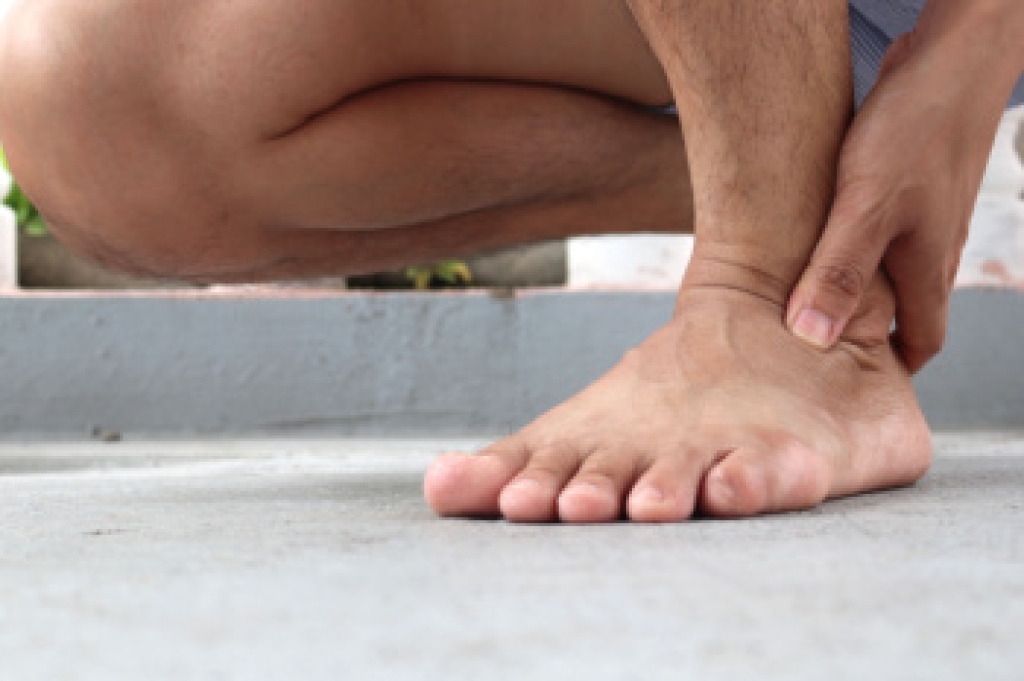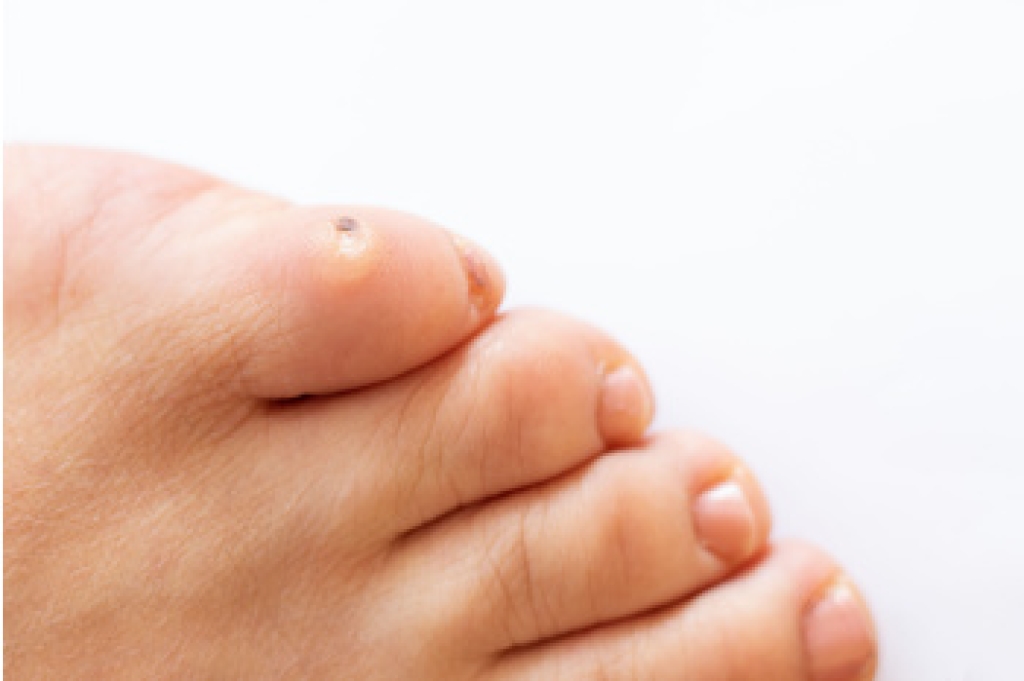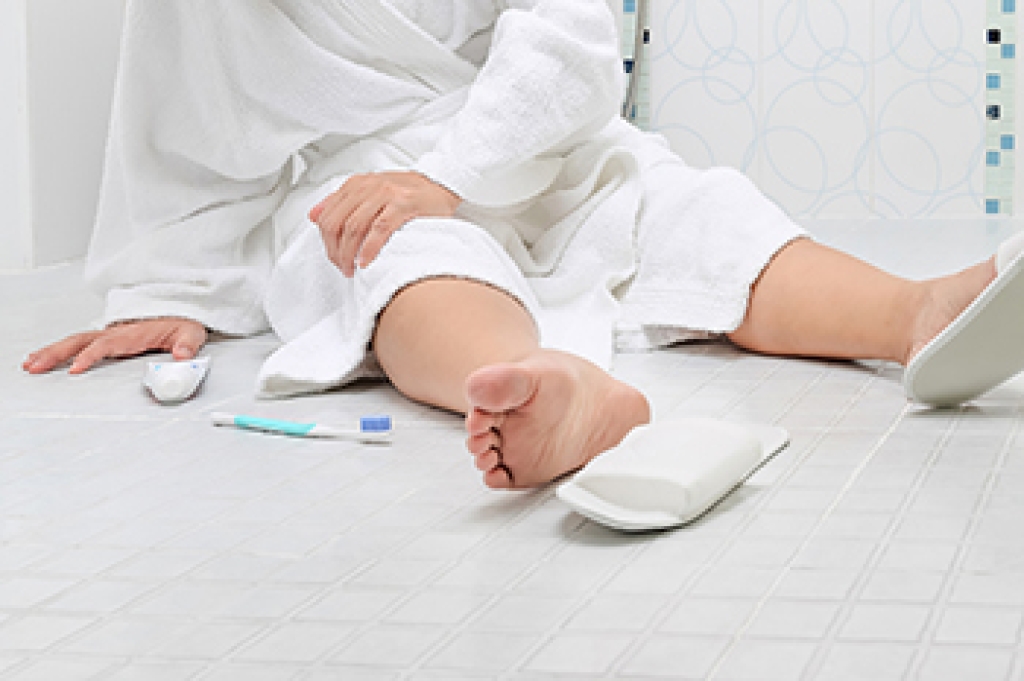Connect With Us
Blog
Navigating Peripheral Neuropathy With Podiatric Solutions

Peripheral neuropathy refers to damage to the peripheral nerves, resulting in symptoms such as numbness, tingling, and weakness, often starting in the feet and hands. This condition can be caused by various factors, including diabetes, infections, injuries, and certain medications. Individuals with diabetes are particularly susceptible to neuropathy due to prolonged high blood sugar levels damaging nerves over time. Neuropathy affects people of all ages, though it is more common in older adults. Treatment aims to manage symptoms and address underlying causes. This may include medications to relieve pain and discomfort, and lifestyle changes, such as maintaining healthy blood sugar levels. If you suffer from peripheral neuropathy, it is suggested that you schedule an appointment with a podiatrist who can help you by providing guidance and foot care tailored to your individual needs.
Neuropathy
Neuropathy can be a potentially serious condition, especially if it is left undiagnosed. If you have any concerns that you may be experiencing nerve loss in your feet, consult with one of our podiatrists from Associates in Podiatry, PC. Our doctors will assess your condition and provide you with quality foot and ankle treatment for neuropathy.
What Is Neuropathy?
Neuropathy is a condition that leads to damage to the nerves in the body. Peripheral neuropathy, or neuropathy that affects your peripheral nervous system, usually occurs in the feet. Neuropathy can be triggered by a number of different causes. Such causes include diabetes, infections, cancers, disorders, and toxic substances.
Symptoms of Neuropathy Include:
- Numbness
- Sensation loss
- Prickling and tingling sensations
- Throbbing, freezing, burning pains
- Muscle weakness
Those with diabetes are at serious risk due to being unable to feel an ulcer on their feet. Diabetics usually also suffer from poor blood circulation. This can lead to the wound not healing, infections occurring, and the limb may have to be amputated.
Treatment
To treat neuropathy in the foot, podiatrists will first diagnose the cause of the neuropathy. Figuring out the underlying cause of the neuropathy will allow the podiatrist to prescribe the best treatment, whether it be caused by diabetes, toxic substance exposure, infection, etc. If the nerve has not died, then it’s possible that sensation may be able to return to the foot.
Pain medication may be issued for pain. Electrical nerve stimulation can be used to stimulate nerves. If the neuropathy is caused from pressure on the nerves, then surgery may be necessary.
If you have any questions, please feel free to contact our offices located in Pittsburgh-South Hills, and Pittsburgh-Bellevue, PA . We offer the newest diagnostic and treatment technologies for all your foot care needs.
Foot Corns

Corns on the feet, medically termed keratotic lesions, are areas of thickened skin caused by repeated friction or pressure. They commonly occur on weight-bearing areas like the toes and soles of the feet. Symptoms can include localized pain or tenderness, a hardened or raised bump, and sometimes inflammation or redness. Older individuals are more prone to developing corns due to factors like reduced skin elasticity and altered foot mechanics. There are three main types of corns. Hard corns are small, dense, and are usually found on bony areas. Soft corns are moist and typically form between toes where the skin is moist. Seed corns are tiny and appear on non-weight-bearing areas. Diagnosis is typically made based on clinical examination. Management involves relieving pressure on the affected area, wearing properly fitting footwear, using protective pads or cushions, and sometimes, having the corn removed. If you have persistent or painful corns, it is suggested that you schedule an appointment with a podiatrist for treatment.
If you have any concerns regarding your feet and ankles, contact one of our podiatrists of Associates in Podiatry, PC. Our doctors will treat your foot and ankle needs.
Corns: What Are They? and How Do You Get Rid of Them?
Corns can be described as areas of the skin that have thickened to the point of becoming painful or irritating. They are often layers and layers of the skin that have become dry and rough, and are normally smaller than calluses.
Ways to Prevent Corns
There are many ways to get rid of painful corns such as wearing:
- Well-fitting socks
- Comfortable shoes that are not tight around your foot
- Shoes that offer support
Treating Corns
Treatment of corns involves removing the dead skin that has built up in the specific area of the foot. Consult with Our doctors to determine the best treatment option for your case of corns.
If you have any questions, please feel free to contact our offices located in Pittsburgh-South Hills, and Pittsburgh-Bellevue, PA . We offer the newest diagnostic and treatment technologies for all your foot care needs.
How Freiberg's Disease Affects Teens

Freiberg's disease is characterized by cartilage degeneration in the lesser metatarsal heads of the feet, notably affecting adolescent females, though it can occur in both genders later in life. The condition primarily involves the second and third metatarsals. While the exact cause remains unclear, vascular problems, genetic predisposition, and altered biomechanics are common causes. Diagnosis by a podiatrist includes clinical evaluation and imaging confirmation. In many cases X-rays show normal bone formation in early stages and flattened, fragmented metatarsal heads as the disease progresses. Treatment focuses on relieving foot pressure and may involve nonoperative measures such as activity modification and custom orthotic support. Surgical interventions are considered for advanced cases. Outcomes for Freiberg’s disease from both nonoperative and operative management are generally favorable, allowing most patients to resume previous activities. To find out what may be causing metatarsal foot pain, it is suggested that you make an appointment with a podiatrist.
Some foot conditions may require additional professional care. If you have any concerns, contact one of our podiatrists of Associates in Podiatry, PC. Our doctors can provide the care you need to keep you pain-free and on your feet.
Rare Foot Conditions
The majority of foot conditions are common and can be treated by a podiatrist. Standard diagnostic procedures are generally used to identify specific conditions and treatment can be rendered. A podiatrist also treats rare foot conditions which can be difficult to diagnose and may need extra attention and care.
There are many rare foot conditions that can affect children. Some of these can include:
- Freiberg’s disease
- Kohler’s disease
- Maffucci syndrome
Freiberg’s disease - This can be seen as a deterioration and flattening of a metatarsal bone that exists in the ball of the foot. It typically affects pre-teen and teenage girls, but can affect anyone at any age. Symptoms that can accompany this can be swelling, stiffness, and the patient may limp.
Kohler’s disease - This often targets the bone in the arch of the foot and affects younger boys. It can lead to an interruption of the blood supply which ultimately can lead to bone deterioration. The patient may limp or experience tenderness, swelling, and redness.
Maffucci syndrome - This affects the long bones in a child’s foot leading to the development of abnormal bone lesions. They are benign growths and typically develop in early childhood and the bones may be susceptible to breaking.
A podiatrist can properly diagnose and treat all types of rare foot conditions. If your child is affected by any of these symptoms or conditions, please don’t hesitate to call our office so the correct treatment method can begin.
If you have any questions, please feel free to contact our offices located in Pittsburgh-South Hills, and Pittsburgh-Bellevue, PA . We offer the newest diagnostic and treatment technologies for all your foot care needs.
How Balance Exercises Can Help Seniors With Falls Prevention

Balance exercises can help seniors prevent falls, leading to serious injuries. As individuals age, balance and stability tend to decline due to muscle weakness and reduced awareness of the body’s movement. These exercises focus on challenging the body's equilibrium through activities like standing on one leg and heel-to-toe walking. By consistently practicing these exercises, seniors can enhance their ability to maintain balance in various situations, such as navigating uneven surfaces or recovering from sudden movements. Additionally, balance exercises promote better posture and body awareness, further decreasing the likelihood of falls. If you are a senior interested in preventing falls, it is suggested that you make an appointment with a podiatrist for a discussion of your current situation, and how you can incorporate balance exercises into your daily routine to maintain independence and quality of life as you age.
Preventing falls among the elderly is very important. If you are older and have fallen or fear that you are prone to falling, consult with one of our podiatrists from Associates in Podiatry, PC. Our doctors will assess your condition and provide you with quality advice and care.
Every 11 seconds, an elderly American is being treated in an emergency room for a fall related injury. Falls are the leading cause of head and hip injuries for those 65 and older. Due to decreases in strength, balance, senses, and lack of awareness, elderly persons are very susceptible to falling. Thankfully, there are a number of things older persons can do to prevent falls.
How to Prevent Falls
Some effective methods that older persons can do to prevent falls include:
- Enrolling in strength and balance exercise program to increase balance and strength
- Periodically having your sight and hearing checked
- Discuss any medications you have with a doctor to see if it increases the risk of falling
- Clearing the house of falling hazards and installing devices like grab bars and railings
- Utilizing a walker or cane
- Wearing shoes that provide good support and cushioning
- Talking to family members about falling and increasing awareness
Falling can be a traumatic and embarrassing experience for elderly persons; this can make them less willing to leave the house, and less willing to talk to someone about their fears of falling. Doing such things, however, will increase the likelihood of tripping or losing one’s balance. Knowing the causes of falling and how to prevent them is the best way to mitigate the risk of serious injury.
If you have any questions, please feel free to contact our offices located in Pittsburgh-South Hills, and Pittsburgh-Bellevue, PA . We offer the newest diagnostic and treatment technologies for all your foot care needs.
Blog Archives
- 2025
- 2024
- 2023
- 2022
- 2021

